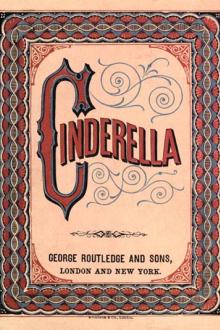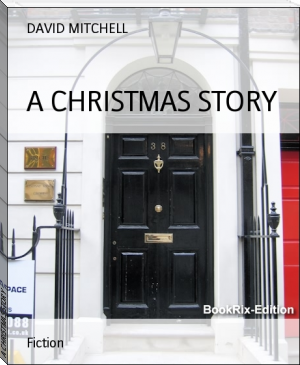Folk-lore of Shakespeare by Thomas Firminger Thiselton Dyer (well read books .TXT) 📕

"Crowdero, whom in irons bound, Thou basely threw'st into Lob's pound."
[16] Mr. Dyce considers that Lob is descriptive of the contrast between Puck's square figure and the airy shapes of the other fairies.
[17] "Deutsche Mythologie," p. 492.
[18] See Keightley's "Fairy Mythology," pp. 318, 319.
It occurs, also, in Massinger's "Duke of Milan" (iii. 2), where it means "behind the arras:"
Read free book «Folk-lore of Shakespeare by Thomas Firminger Thiselton Dyer (well read books .TXT) 📕» - read online or download for free at americanlibrarybooks.com
- Author: Thomas Firminger Thiselton Dyer
- Performer: -
Read book online «Folk-lore of Shakespeare by Thomas Firminger Thiselton Dyer (well read books .TXT) 📕». Author - Thomas Firminger Thiselton Dyer
The ground, too, that had been smitten by a thunder-bolt was accounted sacred, and afterwards enclosed; nor did any one even presume to walk on it. Such spots were, therefore, consecrated to the gods, and could not in future become the property of any one.
Among the many other items of folk-lore associated with thunder is a curious one referred to in “Pericles” (iv. 3): “Thunder shall not so awake the bed of eels.” The notion formerly being that thunder had the effect of rousing eels from their mud, and so rendered them more easy to be taken in stormy weather. Marston alludes to this superstition in his satires (“Scourge of Villainie,” sat. vii.):
Till that tempestuous winds or thunder teare
Their slimy beds.”
The silence that often precedes a thunder-storm is thus graphically described in “Hamlet” (ii. 2):
A silence in the heavens, the rack stand still,
The bold winds speechless, and the orb below
As hush as death, anon the dreadful thunder
Doth rend the region.’”
Earthquakes, around which so many curious myths and superstitions have clustered,[147] are scarcely noticed by Shakespeare. They are mentioned among the ominous signs of that terrible night on which Duncan is so treacherously slain (“Macbeth,” ii. 3):
Clamour’d the livelong night: some say, the earth
Was feverous and did shake.”
And in “1 Henry IV.” (iii. 1) Hotspur assigns as a reason for the earthquakes the following theory:
In strange eruptions; oft the teeming earth
Is with a kind of colic pinch’d and vex’d
By the imprisoning of unruly wind
Within her womb; which, for enlargement striving,
Shakes the old beldam earth, and topples down
Steeples, and moss-grown towers.”
Equinox. The storms that prevail in spring at the vernal equinox are aptly alluded to in “Macbeth” (i. 2):
Shipwrecking storms and direful thunders break,
So from that spring, whence comfort seem’d to come,
Discomfort swells.”
—the meaning being: the beginning of the reflection of the sun is the epoch of his passing from the severe to the milder season, opening, however, with storms.
Wind. An immense deal of curious weather-lore[148] has been associated with the wind from the earliest period; and in our own and foreign countries innumerable proverbs are found describing the future state of the weather from the position of the wind, for, according to an old saying, “every wind has its weather.” Shakespeare has introduced some of these, showing how keen an observer he was of those every-day sayings which have always been much in use, especially among the lower classes. Thus the proverbial wet which accompanies the wind when in the south is mentioned in “As You Like It” (iii. 5):
And again, in “1 Henry IV.” (v. 1):
Doth play the trumpet to his [i. e., the sun’s] purposes;
And by his hollow whistling in the leaves
Foretells a tempest, and a blustering day.”
A popular saying to the same effect, still in use, tells us that:
It is in the rain’s mouth.”
Again, in days gone by, the southerly winds were generally supposed to be bearers of noxious fogs and vapors, frequent allusions to which are given by Shakespeare. Thus, in “The Tempest” (i. 2), Caliban says:
And blister you all o’er.”
A book,[149] too, with which, as already noticed, Shakespeare appears to have been familiar, tells us, “This southern wind is hot and moist. Southern winds corrupt and destroy; they heat, and make men fall into the sickness.” Hence, in “Troilus and Cressida” (v. 1), Thersites speaks of “the rotten diseases of the south;” and in “Coriolanus” (i. 4), Marcius exclaims:
Once more, in “Cymbeline” (ii. 3), Cloten speaks in the same strain: “The south fog rot him.”
Flaws. These are sudden gusts of wind. It was the opinion, says Warburton, “of some philosophers that the vapors being congealed in the air by cold (which is the most intense in the morning), and being afterwards rarefied and let loose by the warmth of the sun, occasion those sudden and impetuous gusts of wind which were called ‘flaws.’” Thus he comments on the following passage in “2 Henry IV.” (iv. 4):
As flaws congealed in the spring of day.”
In “2 Henry VI.” (iii. 1) these outbursts of wind are further alluded to:
Until the golden circuit on my head,
Like to the glorious sun’s transparent beams,
Do calm the fury of this mad-bred flaw.”
Again, in “Venus and Adonis” (425), there is an additional reference:
Wreck to the seaman, tempest to the field,
Sorrow to shepherds, woe unto the birds,
Gusts and foul flaws to herdmen and to herds.”
In the Cornish dialect a flaw signifies primitively a cut.[150] But it is also there used in a secondary sense for those sudden or cutting gusts of wind.[151]
Squalls. There is a common notion that “the sudden storm lasts not three hours,” an idea referred to by John of Gaunt in “Richard II.” (ii. 1):
Thus, in Norfolk, the peasantry say that “the faster the rain, the quicker the hold up,” which is only a difference in words from the popular adage, “after a storm comes a calm.”
Clouds. In days gone by, clouds floating before the wind, like a reek or vapor, were termed racking clouds. Hence in “3 Henry VI.” (ii. 1), Richard speaks of:
Not separated with the racking clouds.”
This verb, though now obsolete, was formerly in common use; and in “King Edward III.,” 1596, we read:
That, rack’d upon the carriage of the winds,
Increase,” etc.
At the present day one may often hear the phrase, the rack of the weather, in our agricultural districts; many, too, of the items of weather-lore noticed by Shakespeare being still firmly credited by our peasantry.
[89] Singer’s “Shakespeare,” vol. x. p. 292.
[90] “Illustrations of Shakespeare,” 1839, pp. 255, 256.
[91] Singer’s “Shakespeare,” vol. viii. p. 208.
[92] See Knight’s “Life of Shakespeare,” 1843, p. 63.
[93] “Pop. Antiq.,” 1849, vol. iii. p. 241.
[94] See Swainson’s “Weather-Lore,” 1873, p. 176, for popular adages on the Continent.
[95] “Weather-Lore,” pp. 175, 176.
[96] Napier’s “Folk-Lore of West of Scotland,” 1879, p. 141.
[97] Quoted in Southey’s “Commonplace Book,” 1849, 2d series, p. 462.
[98] See Tylor’s “Primitive Culture,” 1871, vol. i. pp. 261, 296, 297, 321.
[99] In “3 Henry VI.” (ii. 1), Edward says:
Upon my target three fair shining suns.”
[100] “Glossary to Shakespeare,” p. 283.
[101] Ray gives the Latin equivalent “Ab equis ad asinos.”
[102] Baring-Gould’s “Curious Myths of the Middle Ages,” 1877, p. 190.
[103] Cf. “Love’s Labour’s Lost” (v. 2): “Yet still she is the moon, and I the man.”
[104] Fiske, “Myths and Mythmakers,” 1873, p. 27.
[105] “Curious Myths of the Middle Ages,” 1877, p. 197.
[106] Douce’s “Illustrations of Shakespeare,” 1839, p. 10.
[107] For further information on this subject, see Tylor’s “Primitive Culture,” 1873, vol. i. pp. 288, 354-356; vol. ii. pp. 70, 202, 203.
[108] See Brand’s “Pop. Antiq.,” vol. iii. pp. 142, 143.
[109] See “English Folk-lore,” pp. 43, 44.
[110] “Primitive Culture,” 1873, vol. i. pp. 354, 355.
[111] The words “moonish” (“As You Like It,” iii. 2) and “moonlike” (“Love’s Labour’s Lost,” iv. 3) are used in the sense of inconstant.
[112] See Douce’s “Illustrations of Shakespeare,” 1839, p. 18.
[113] Tylor’s “Primitive Culture,” vol. i. p. 329.
[114] “Illustrations of Shakespeare,” 1839, p. 16.
[115] See Scot’s “Discovery of Witchcraft,” 1584, pp. 174, 226, 227, 250.
[116] For further examples, see Douce’s “Illustrations of Shakespeare,” p. 17.
[117] See Douce’s “Illustrations of Shakespeare,” 1839, p. 116.
[118] See Swainson’s “Weather-Lore,” 1873, pp. 182-192.
[119] See Tylor’s “Primitive Culture,” 1873, vol. i. p. 130; “English Folk-Lore,” 1878, pp. 41, 42.
[120] See Swainson’s “Weather-Lore,” pp. 182, 183.
[121] See Williams’s “Superstitions of Witchcraft,” pp. 123-125; Scot’s “Discovery of Witchcraft,” bk. iv. p. 145.
[122] “Illustrations of Shakespeare,” 1839, p. 405.
[123] Nares’s “Glossary,” 1872, vol. ii. p. 580.
[124] “Primitive Culture,” vol. i. p. 131.
[125] Cf. “Richard III.” (iv. 4); “1 Henry IV.” (i. 1, iii. 1); “Antony and Cleopatra” (iii. 13); “The Tempest” (i. 2); “Hamlet” (i. 4); “Cymbeline” (v. 4); “Winter’s Tale” (iii. 2); “Richard II.” (iv. 1).
[126] “Primitive Culture,” vol. i. p. 131; see Brand’s “Popular Antiquities,” 1849, vol. iii. pp. 341-348.
[127] “Walton’s Lives,” 1796, p. 113, note.
[128] Douce’s “Illustrations of Shakespeare,” 1839, p. 397.
[129] Ibid. p. 3.
[130] See Brand’s “Pop. Antiq.,” 1849, vol. iii. p. 400.
[131] Purchas, “His Pilgrimes” (1625, pt. i. lib. iii. p. 133), quoted by Mr. Aldis Wright in his “Notes to The Tempest,” 1875, p. 86.
[132] See Puck as Will-o’-the-Wisp; chapter on “Fairy-Lore.”
[133] See “Notes and Queries,” 5th series, vol. x. p. 499; Brand’s “Pop. Antiq.,” 1849, vol. iii. p. 410; Nares’s “Glossary,” vol. i. p. 309.
[134] A “fire-drake” appears to have been also an artificial firework, perhaps what is now called a serpent. Thus, in Middleton’s “Your Five Gallants” (1607):
Mounted a little, gave a crack and fell.”
[135] “New Illustrations of the Life, Studies, and Writings of Shakespeare,” vol. ii. p. 272.
[136] See Thoms’s “Notelets on Shakespeare,” p. 59.
[137] “Fairy Mythology,” edited by Hazlitt, 1875, p. 40.





Comments (0)